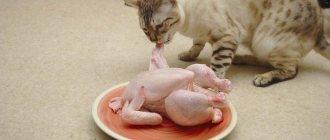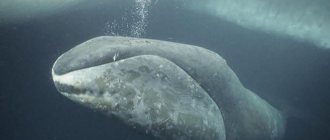The lifespan of some creatures on Earth is measured in hours, while others are considered practically immortal or continue to exist for centuries. In the list below we have included the longest-living representatives of the fauna, whose organisms are capable of functioning for many years and even centuries.
♥ ON TOPIC: The tallest people on Earth in history + video.
Long-lived animals are the oldest inhabitants of the Earth
Longevity in the animal world is usually associated with elephants, turtles, whales and other leisurely, large animals that have a slow metabolism, but few people know that the most ordinary city pigeon can live up to 35 years, and the village mute swan can live up to 70 years. ty, if it doesn't go to the roast.
Naturally, there is the problem of determining both the age of a particular individual and the maximum life expectancy of representatives of the species as a whole. The age of a particular creature is determined by various criteria - seasonal changes in development in fish, changes in plumage color in birds, wear of teeth in mammals, etc. The maximum lifespan is usually taken to be the average of the 10% oldest discovered members of a species. Naturally, both parameters are very conditional and highly dependent on the sample. However, several positions in the ranking of the longest-livers of planet Earth really deserve attention.
♥ ON TOPIC: Interesting facts about the human body that you might not know.
Rodents
Unfortunately, little fluffies cannot please their owners for long. Mice live only one to two years, a little more than a rat - only 2-3 years, hamsters - on average three years. Guinea pigs can be called long-livers; their lifespan is 6-8 years, and the oldest pig was 15 years old.
Chinchillas live up to 12-14 years, and some of them even delight their owners for 20 years, but these are exceptional cases. A decorative rabbit will spend about 5 years with its owners, while its larger relatives will spend 7-8 years. Ferrets live a little longer, on average 10 years.
Chimpanzee, 75 years old
The closest relative, according to modern ideas, of Homo sapiens, whose genome differs from ours by only 6.4%. However, the primate is not able to reach the maximum human age level - the maximum life expectancy of chimpanzees is considered to be 75 years (the average life expectancy is about 40 years).
♥ ON TOPIC: Old child: “progeria” is a disease that leads to premature aging.
Flamingo, 83 years old
The usual life expectancy for pink flamingos (Phoenicopterus roseus) is about 30-40 years, but in 2014, a bird named Greater died in one of the Australian zoos, which by that time was 83 years old. Thus, the flamingo doubled the age considered by scientists to be the maximum for this species.
♥ ON TOPIC: What will happen to planet Earth if the Moon is destroyed.
Notes
- World Bank data for 2022 for both sexes, rounded: Russia - 73 years, USA - 79 years, Germany - 81, Japan - 84. [1]
- For 50 provinces of European Russia.
- For the European part of the RSFSR.
- ↑ 4,04,14,24,34,44,54,64,7 For 2003—2010 indicators were calculated using the population recalculated taking into account the results of the 2010 All-Russian Population Census.
- Starting from 2014, data taking into account the Republic of Crimea and the city of Sevastopol.
- This section is almost entirely borrowed from this forum thread khk.ru.
| [ + ] Statistics for Russia | |
| Economy of Russia | Depreciation of fixed assets • Price history (gasoline • oil) • Labor productivity • Agricultural growth (farmland area • production of basic products • share of imports in food turnover) • Hydrocarbon exports |
| Social sphere | Motorization • Adequate roads • Poverty (according to Rosstat • according to the World Bank) • Marriages and divorces • Cash income deficit • Share of citizens using government services online • Rates on deposits of individuals • Minimum wage • Consumption (alcohol • food) • Living wage • Labor force (unemployment • employment • working-age population) • Disabled people • Inequality (Gini coefficient • income distribution) • Subsidies and social support for housing and communal services |
| Healthcare | Abortion • Hospitals and places in them |
| Crime in Russia | Bribery • Robbery and robbery • Road traffic accidents • Rape and attempted rape • Theft • Drug trafficking • Terrorism • Serious bodily harm • Murder and attempted murder • Hooliganism • Prison population |
| Housing in Russia | Improvement of the housing stock (water supply • gasification • sewerage • heat supply) • Area of the housing stock • Housing construction • Housing conditions |
| Demographics of Russia | Demographic forecast until 2035 • Age groups • Men and women • Life expectancy ( total • survival rate) • Total fertility rate |
| Population | Urban and rural population (population in rural settlements) • Natural increase (fertility • mortality • maternal mortality • infant mortality) • Migration increase (migration to the former USSR) |
| Science and education | Education index (by country) • Science financing • Secondary education (students and teachers • schools) • Higher education (universities • students) |
| Story | The scale of repression • Medals at the Olympic and Paralympic Games • Losses in WWII (civilian) • Universiade 2013 |
| Other | List of countries by GDP (PPP) per capita • Results of the referendum on preserving the USSR |
Elephant, 86 years old
An Asian (aka Indian) elephant can easily live for about 60-70 years, especially considering that an adult does not have natural enemies in its habitat (except for homo sapiens, of course). In captivity, elephants live even longer; the record is 86 years, which an elephant lived in one of the Chinese zoos. This makes the Asian elephant the longest living land mammal (again, excluding humans).
♥ ON THE TOPIC: Ventriloquists (ventrologists), or how to speak and sing without opening your mouth (video).
Vulture, 100 years old
The ranking of the oldest animals on the planet includes several large birds, the most tenacious of which is the turkey vulture, which densely inhabits both South and North America. This species leads a lifestyle familiar to vultures - circling at high altitudes in search of carrion or other prey, after which it competes for food with other vultures. It is believed that a turkey vulture can easily surpass 100 years of life expectancy, but in practice the average life expectancy of vultures is about 50 years.
♥ ON TOPIC: There are 16 circles in this picture, do you see them?
Life expectancy of representatives of different breeds at home
The lifespan of an animal is always influenced by several factors. But the average data shown in the table is rarely subject to serious correction.
| Breed | Lifespan |
| Abyssinian cat | up to 20 years |
| Asian (tabby) | 15-20 |
| American Bobtail longhair/shorthair | 10-15 years |
| American shorthair cat | 12-17 |
| American Curl longhair/shorthair | 12-17 |
| Anatolian | 15-20 |
| Arabian Mau | 10-15 |
| Bengal | 10-15 |
| Bombay | 10-15 |
| British Shorthair/Longhair | 10-15 |
| Burma (Burmanskaya) | 10-15 |
| Havana | 10-15 |
| Himalayan cat | 12-17 |
| Devon Rex | 12-17 |
| Don Sphynx | 10-15 |
| Egyptian Mau | 10-15 |
| Yorkie chocolate cat | 14-16 |
| Cymric | 12-16 |
| Korat | 12-15 |
| Kurilian Bobtail shorthair/longhair | 12-15 |
| Laperm shorthair/longhair | 14-17 |
| Munchkin shorthair/longhair | 12-16 |
| Maine Coon | 12-17 |
| Manx (Manx cat) | 10-15 |
| Norwegian forest | 15-20 |
| Oriental Shorthair/Longhair | 15-20 |
| Persian | 12-17 |
| Russian blue | 12-17 |
| Siamese | 12-17 |
| Siberian | 15-20 |
| Scottish fold, straight | 10-15 |
| Somalia | 12-15 |
| Sphinx (Canadian) | 12-16 |
| Thai | 12-17 |
| Chantilly-Tiffany | 12-16 |
| Toyger | 10-15 |
| Tonkinese | 10-15 |
| Turkish Angora | 12-17 |
| Turkish van | 15-20 |
| Chartreuse | 10-15 |
| Japanese Bobtail Shorthair/Longhair | 12-16 |
The lifespan of domestic cats depends on the genetic instructions laid down during the development of a particular breed. In some cases (Maine Coon, Persian) the data is based on research from insurance companies that provide financial support for veterinary supervision.
In other cases, statistics are based on practical observations of breeders and felinologists of cats at home.
This is interesting! All sources clearly indicate an increase in the length of time that cats live at home. The culture of keeping animals and the responsibility of owners significantly raises the lower threshold of longevity.
Hatteria, 111 years old
This species is the absolute record holder for life expectancy among lizards, and this despite the fact that the reptile has practically not changed its appearance since the Mesozoic era (that is, for tens of millions of years).
Large, up to 76 cm in length, the lizard lives exclusively in New Zealand and nearby islands, and in the Southland Museum on South Island there are more than fifty tuaterias living simultaneously. The most famous representative of the exhibition is a lizard named Harry, whose age has already exceeded a hundred years, and it is noted that at 111 years of age the male continued to be sexually active and produced offspring. The average lifespan of a tuataria is about 70 years.
♥ ON TOPIC: How many years do trees live (table).
Life expectancy at birth by regions of Russia
Rosstat data for 2013 [7][8]. Also Sevastopolstat data for Sevastopol for 2014: total population 72.28, men 67.14, women 77.04. And for Sevastopol for 2013: the entire population is 72.23, men 67.23, women 76.62.
| No. | Region of Russia, 2013 data | Both sexes | Men | Women |
| 1 | Ingushetia | 78,84 | 75,97 | 81,32 |
| 2 | Moscow | 76,37 | 72,31 | 80,17 |
| 3 | 20x20px Dagestan | 75,63 | 72,31 | 78,82 |
| 4 | Saint Petersburg | 74,22 | 69,43 | 78,38 |
| North Caucasus Federal District | 73,95 | 69,67 | 77,93 | |
| 5 | North Ossetia Alania | 73,94 | 68,46 | 79,06 |
| 6 | Karachay-Cherkessia | 73,94 | 69,21 | 78,33 |
| 7 | Kabardino-Balkaria | 73,71 | 69,03 | 78,08 |
| 8 | Chechen Republic | 73,2 | 70,23 | 76,01 |
| 9 | Stavropol region | 72,75 | 67,91 | 77,27 |
| 10 | Krasnodar region | 72,29 | 67,16 | 77,27 |
| 11 | Khanty-Mansiysk Autonomous Okrug | 72,23 | 67,27 | 77,08 |
| 12 | Belgorod region | 72,16 | 66,86 | 77,32 |
| 13 | Tatarstan | 72,12 | 66,35 | 77,73 |
| Central Federal District | 71,93 | 66,45 | 77,21 | |
| 14 | Adygea | 71,8 | 66,55 | 76,97 |
| Southern Federal District (since 2010) | 71,76 | 66,59 | 76,79 | |
| 15 | Penza region | 71,54 | 65,47 | 77,52 |
| 16 | Volgograd region | 71,42 | 66,11 | 76,57 |
| 17 | Rostov region | 71,39 | 66,34 | 76,28 |
| 18 | Tyumen region | 71,35 | 65,97 | 76,72 |
| 19 | Kalmykia | 71,35 | 65,65 | 77,25 |
| 20 | Astrakhan region | 71,34 | 65,91 | 76,72 |
| Northwestern Federal District | 71,25 | 65,65 | 76,57 | |
| 21 | 71,23 | 66,53 | 75,88 | |
| 22 | Tambov Region | 70,93 | 64,87 | 77,15 |
| 23 | Voronezh region | 70,89 | 64,81 | 77,03 |
| 24 | Chuvashia | 70,79 | 64,59 | 77,19 |
| 25 | Moscow region | 70,78 | 65,1 | 76,3 |
| Russian Federation | 70,76 | 65,13 | 76,3 | |
| 26 | Ryazan Oblast | 70,74 | 64,77 | 76,61 |
| 27 | Saratov region | 70,67 | 65,01 | 76,19 |
| 28 | Lipetsk region | 70,66 | 64,56 | 76,77 |
| 29 | Mordovia | 70,56 | 64,79 | 76,39 |
| 30 | Kaliningrad region | 70,51 | 65,1 | 75,68 |
| 31 | Ulyanovsk region | 70,5 | 64,64 | 76,3 |
| 32 | Murmansk region | 70,46 | 65,15 | 75,26 |
| 33 | Yaroslavl region | 70,45 | 64,25 | 76,37 |
| 34 | Leningrad region | 70,36 | 64,73 | 76,05 |
| 35 | Tomsk region | 70,33 | 64,78 | 75,9 |
| 36 | Kirov region | 70,26 | 64,31 | 76,29 |
| 37 | Oryol Region | 70,22 | 64,36 | 75,92 |
| 38 | Novosibirsk region | 70,19 | 64,29 | 76,13 |
| 39 | Arhangelsk region | 70,16 | 64,11 | 76,27 |
| 40 | Kursk region | 70,14 | 64,27 | 76 |
| Volga Federal District | 70,06 | 64,04 | 76,1 | |
| Ural federal district | 70,06 | 64,14 | 75,93 | |
| 41 | Kaluga region | 70,02 | 64,43 | 75,51 |
| 42 | Udmurtia | 69,92 | 63,52 | 76,33 |
| 43 | Kostroma region | 69,86 | 64,31 | 75,29 |
| 44 | Ivanovo region | 69,84 | 63,9 | 75,42 |
| 45 | Sverdlovsk region | 69,81 | 63,64 | 75,86 |
| 46 | Altai region | 69,77 | 64,11 | 75,44 |
| 47 | Bryansk region | 69,75 | 63,32 | 76,32 |
| 48 | Omsk region | 69,74 | 63,86 | 75,57 |
| 49 | Bashkortostan | 69,63 | 63,66 | 75,84 |
| 50 | Chelyabinsk region | 69,52 | 63,48 | 75,46 |
| 51 | Nizhny Novgorod Region | 69,42 | 63,06 | 75,75 |
| 52 | Tula region | 69,41 | 63,22 | 75,57 |
| 53 | Samara Region | 69,4 | 63,28 | 75,5 |
| 54 | Vologda Region | 69,35 | 63,21 | 75,63 |
| 55 | Mari El | 69,3 | 62,82 | 76,13 |
| 56 | Komi | 69,27 | 63,22 | 75,39 |
| 57 | Karelia | 69,19 | 63,17 | 75,05 |
| 58 | Vladimir region | 69,13 | 62,78 | 75,44 |
| 59 | Yakutia | 69,13 | 63,54 | 75 |
| 60 | Krasnoyarsk region | 69,06 | 63,35 | 74,77 |
| 61 | Orenburg region | 68,9 | 63,1 | 74,82 |
| 62 | Smolensk region | 68,9 | 62,93 | 74,97 |
| 63 | Perm region | 68,75 | 62,61 | 74,89 |
| Siberian Federal District | 68,63 | 62,74 | 74,58 | |
| 64 | Khakassia | 68,57 | 62,95 | 74,14 |
| 65 | Kurgan region | 68,27 | 61,93 | 74,97 |
| 66 | Primorsky Krai | 68,19 | 62,77 | 73,92 |
| 67 | Tver region | 68,13 | 62,28 | 74,03 |
| 68 | Kamchatka Krai | 67,98 | 62,59 | 74,07 |
| 69 | Khabarovsk region | 67,92 | 62,13 | 73,96 |
| 70 | Pskov region | 67,82 | 61,81 | 74,05 |
| Far Eastern Federal District | 67,81 | 62,22 | 73,76 | |
| 71 | Kemerovo region | 67,72 | 61,5 | 74,04 |
| 72 | Sakhalin region | 67,7 | 62,17 | 73,53 |
| 73 | Novgorod region | 67,67 | 60,89 | 74,75 |
| 74 | Buryatia | 67,67 | 62,32 | 73,06 |
| 75 | Altai | 67,34 | 61,48 | 73,44 |
| 76 | Magadan Region | 67,12 | 61,84 | 72,77 |
| 77 | Transbaikal region | 67,11 | 61,47 | 73,1 |
| 78 | Irkutsk region | 66,72 | 60,32 | 73,28 |
| 79 | Amur region | 66,38 | 60,59 | 72,59 |
| 80 | Nenets Autonomous Okrug | 65,76 | 60,22 | 75,21 |
| 81 | Jewish Autonomous Region | 64,94 | 58,84 | 71,66 |
| 82 | Chukotka Autonomous Okrug | 62,11 | 58,65 | 66,42 |
| 83 | Tyva | 61,79 | 56,37 | 67,51 |
Man, 120 years old
Many people tend to separate themselves from the biological kingdom of animals, however, from the point of view of science, man is a real animal in all respects. At the same time, the development of medicine and the growth of living standards allows experts today to indicate the maximum life expectancy at 120 years (the average human life expectancy is 67 years).
♥ BY TOPIC: The best cities in the world: 28 places with the highest standard of living.
Factors influencing life expectancy
People are exposed to environmental factors. They affect health, well-being and functioning.
Generally accepted classification of risk factors:
| Factors | Average share (%) | Groups of risk factors |
| Lifestyle | 50 | Alcohol, smoking, poor relationships with family and friends, low level of culture |
| Genetic and biological factors | 20 | Genetic predisposition to various hereditary diseases |
| Nature and climatic conditions | 18 | Poor environmental conditions, polluted water, soil, weather conditions, magnetic storms and harmful radiation |
| Healthcare | 9 | Lack of disease prevention, poor quality medical care, untimely treatment of diseases |
All factors affect a person’s life expectancy and can cause deterioration in health.
Medicine is regularly improved, and manufacturers produce medications that help cope with diseases.
There are other important reasons that can negatively affect human health:
- Living environment. These are chemical pollution, excessive noise, and long trips on public transport.
- Production factors. This category includes heavy work, noise during production, and contact with chemicals.
- Lifestyle. People limit themselves in recreation, sports, do not spend vacations outside the city, and do a lot of housework.
Note! Every year in Russia the mortality rate increases and the population decreases.
To find out how many years a person can live, it is necessary to take into account the environment. Along with these indicators, people’s ability to work decreases.
Blue whale, 150 years old
For a long time, the bowhead whale was considered the oldest vertebrate after several individuals were discovered that were over 100 years old. In addition, scientists have been observing the male for a long time, who supposedly lived for more than a century and a half.
However, the figures are based on calculations of changes in the racemization of aspartic acid in the lens of an animal’s eye; without going into details, it should only be noted that the method does not claim any accuracy and is disputed by many scientists. The average lifespan of whales ranges from 35 to 90 years, depending on the species, but cases of natural death for this species are recorded extremely rarely.
♥ ON THE TOPIC: Cosmic speeds: how fast do you need to fly to leave the Earth, planetary system and galaxy?
How to extend a cat's life
To give your cat a long and happy life next to you, follow these simple rules.
High-quality balanced nutrition
- Choose food of at least premium class with a high protein content.
- Cats are predators. They need meat.
- Limit the content of carbohydrates and lactose in your cat's diet; adult animals do not digest them well.
- Make sure your cat's diet contains all the necessary vitamins, minerals and amino acids.
- Eliminate foods from the diet that should not be given to cats.
- Follow a special therapeutic diet if your veterinarian has prescribed it for your cat.
- Monitor not only the quality of food, but also the size of portions. Don't go hungry, don't overfeed.
- Provide 24/7 access to clean water.
What not to give to cats:
- fatty meat (pork), smoked meats, canned food;
- milk – due to lactose intolerance;
- tubular bones - can injure the stomach and intestines;
- boiled potatoes - starch is not absorbed;
- legumes (beans, peas) – cause flatulence;
- river fish – causes vitamin deficiency, increases the risk of urolithiasis;
- dog food – lack of vitamins and microelements;
- liver – disturbance of intestinal motility.
Read: What you should not feed your cat.
Pet health and condition
- Don't skip routine checkups with your veterinarian.
- Follow your vaccination schedule strictly.
- Follow all doctor's orders.
- Regularly carry out antiparasitic treatment against internal and external parasites.
- Be attentive to your pets, contact your veterinarian if there are any changes in the cat’s behavior or condition.
Sufficient physical activity
- Play with your pet regularly.
- Make sure your cat has toys and play equipment.
- Walk on a leash or harness.
Hygienic norms and rules
- Regularly care for your cat's teeth, ears, and claws.
- Brush your pet and bathe if necessary.
- Keep your pet's bowls, tray, bed, and habitat clean.
Regulation of sexual desire and pregnancy
- Avoid accidental matings.
- Spay/neuter the animal if you do not plan to have offspring.
Comfortable living conditions
- Organize a comfortable bed (house).
- Avoid drafts in the animal's habitat.
- Monitor the temperature. Avoid dampness, cold and excessive heat in the premises where the cat is kept.
Safety
- Avoid self-walking.
- Keep toxic substances, household chemicals, poisons, and chemicals out of reach of the animal.
- Keep the trash can closed to prevent your cat from getting into it.
- Keep windows and balcony doors closed. Install anti-cat bars.
- Avoid poisonous houseplants.
- Make sure that the animal does not fall from a height.
Your love, attention and care are the best means of extending a cat’s life.
Tardigrade, 200 years old
This miniature animal, about a millimeter long, is considered by most researchers to belong to the order of arthropods, although this classification raises some doubts. The average lifespan of tardigrades is about 200 years, but they attract increased interest due to their other abilities.
The fact is that a miniature organism is capable of continuing to function in conditions that are lethal to the vast majority of other creatures. During various experiments on Earth and in space, tardigrades were cooled in liquid oxygen to -193 degrees Celsius for 20 months and in liquid helium to -271 degrees for 8 hours, boiled at +100 degrees for an hour, poisoned with hydrogen sulfide and carbon dioxide, were irradiated with ultraviolet light and radiation, the dose of which was 1000 times higher than lethal for humans. Under these conditions, the creature not only survived, but continued to move, feed and even reproduce.
♥ ON TOPIC: What does “pedal horse” mean?
Stages of a cat's life cycle
The life of any cat can be divided into several stages.
Infancy (from birth to six months)
The first six months of a baby’s life are the most significant and eventful. Ten days after birth, these are blind sucklings, whose whole world is concentrated in the warmth of the mother’s body and the nipple with milk.
By two months, kittens become quite independent, begin to feed on their own, and learn to use a litter box.
Until three or four months, the pets usually do not leave the nursery and the mother. From four to six, they resemble playful children on the cusp of adolescence.
Youth (from six months to two years)
In almost all breeds, by six months the kitten is at the beginning of puberty. Physically, he is already quite developed, almost independent.
Usually at one year the female is already able to give birth and feed kittens, although it is better if pregnancy occurs a little later, at least at 18 months. Cats mature more slowly - up to one and a half years, and in some breeds up to two or three years.
Youth (three to six years old)
Animals are considered conditionally young when they are between two and six years old. This age approximately corresponds to 20-40 years of a person. It is at the age of six that it is customary in nurseries to remove an animal from breeding.
But with good care, pets are active, healthy and capable of producing full-fledged offspring for much longer - at least up to seven to ten years.
Maturity (seven to ten years)
A cat from seven to ten years old is considered a mature individual. About the same as a person aged 40-55 years old. The animal is in the prime of life, behaves calmly and reservedly.
Older cats (eleven to fourteen years old)
From 11 to 14 years old, the cat is in old age, corresponding to human 55-70 years. If the pet does not suffer from any chronic diseases, then neither he nor the owner will have any special problems in life. Sleep time increases, whims in choosing food may appear, and there is no particular desire for outdoor games.
Old age (over fifteen years)
Pets over 15 years old can be considered 80 year olds. They are calm, unhurried, affectionate, need the attention and care of their owner, and express their devotion more clearly.
This division into age groups is very arbitrary. Many animals at 15 years old are still vigorous, playful and active. There is a known cat of the Nibelung breed that lived 36 years. She gave birth to and nursed her last kittens at 28. By the way, read about long-lived cats on our portal.
Elephant turtle, 250 years old
The Galapagos tortoise, also known as the elephant tortoise, is the largest tortoise that has survived to this day. However, this might not have happened, since in the 19th century European sailors used these reptiles as food supplies for long voyages, thus destroying about 200,000 individuals. In captivity, the Galapagos (elephant) tortoise lives for about 170 years, but there are cases where the age of individual individuals was more than a quarter of a century.
♥ ON THE TOPIC: Dolphins are not fish and other interesting facts about these cetaceans.
Greenland shark, 300 years old
Like the bowhead whale, the bowhead shark leads a very measured lifestyle in the icy waters of the North Atlantic, has no natural enemies and, according to some data, can live to be 300 years old. It is noteworthy that puberty in this fish occurs at the age of about 150 years and even later.
♥ ON THE TOPIC: Animals and insects, or 30 reasons not to go to Australia.











